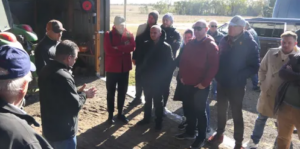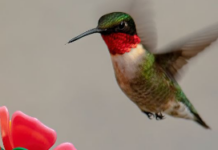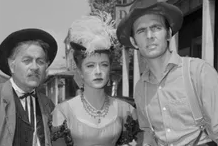MOUNDRIDGE — Almost two dozen Ukrainian leaders and parliamentarians came to Kansas to learn about water and irrigation. They also wanted to understand crop rotation, diseases and soil health.
After landing in Wichita, they spent time at the Goering Farm in Moundridge, examining pivot systems and listening to Ryan Goering, a farmer who is part of a water technology farm, and Earl Lewis, chief engineer for the Kansas Department of Agriculture-Division of Water Resources.
“After the collapse of the Soviet Union, not much of the irrigation systems survived,” said Artem Nagaievskyi. He said many in the Ukraine want to get irrigation systems working again; “that is why we are here.”
Goering, whose family immigrated to the U.S., specifically Kansas, from the Ukraine during the late 1800s, told the delegation that on his water technology farm he can use from 10 to 20% less water and achieve the same yields by utilizing different methods depending upon whether the land is irrigated or dryland.
“It’s part of the reason to show other farmers that they can live with less,” Goering told the Ukrainians who gathered on his family farm.
The Goering family is part of the Kansas Water Office’s Water Technology Farm program. A few years ago, the Goering’s reframed a part of their pivot system, adding a variety of nozzles and lines. They also used varying-width hoses, including a haphazard variety of colors. While doing this, they decreased the amount of water they used and lowered the water pressure as well. 
“We depend on groundwater that in our area is a self-replenishing aquifer,” Goering said. “It’s approximately 10% over-utilized.”
The Water Technology Farm is part of a public-private partnership that includes manufacturers, producers, KWO and Kansas State University — which collects the data. The Ukrainian delegation asked many questions about the water and how this public-private system was set up.
Goering told the group that summer is a “bit of a dice roll,” as one never knows whether it will be wet or dry in Kansas. But, he explained, like in the Ukraine, corn and soybeans do well in this climate.
Lee Wheeler, an irrigation engineer and consultant with NRCS, demonstrated how the different pivots worked on Goering’s land. By using a variety of pivots and lines, dependent on the amount of water needed to be released, they are able to save water.
“Drip irrigation has less evaporation,” Lee said. “More of the water goes into the root of the crop.”
Many in the delegation asked questions about the system. Some grew up on farms or farmed before they went into government work. “In the process of reforming our irrigation system in the south of the Ukraine, we would like to learn the best practices,” said Mykola Solskyi. “We have similar water problems (as in Kansas). Not much rain.”
“They want to learn how we manage things,” said Lewis. “We make sure we don’t give out more water rights than there are. You can buy water rights from your neighbor.”
Lewis said he has spoken with delegations from Australia, China and Turkey.
“It doesn’t happen often, maybe three or four times in the past 15 years,” he said.
Lewis told the group about water regulations and how water rights work in Kansas, explaining that whoever gets their water rights first gets their access first.
Lina Dotsenko, Ph.D., the CEO and co-founder of the Agricultural Ukrainian group Bridges, brought in the delegation. Dotsenko holds degrees in agriculture and is fluent in English. Her group specializes in agriculture, including improving the efficiency and profitability of agribusiness in the Ukraine.
Dotsenko hopes that in addition to irrigation and soil health, the representatives bring back information about governmental policies that regulate agribusiness, seeds that help improve crop yields and technological advances — including machinery.
Unlike much of Europe, the Ukraine uses GMOs, chemicals and fertilizers — similar to the U.S.
“This is a very successful trip,” Dotsenko said. “The USDA (in Washington, D.C.) discussed issues of biotechnology and agribusiness.”
Dotsenko said in addition to sunflowers, corn, wheat, sorghum, barley and buckwheat, the Ukraine is known for its large dairy farms, fruits and vegetables — especially apples and cherries.
Because the southern part of the Ukraine is most affected by drought, this group of parliamentarians and leaders from the southern part of the country were most interested in water and water rights. Recently, the government changed legislation so farmers could own more than an acre or two. They hope to eventually increase the amount of individual ownership.
“They lifted the moratorium of agricultural land sales in July of this year,” Dotsenko said. “In the Ukraine, agricultural land could be rented out, but no one could sell it.”
As of this summer, farmers can now sell their land. In 2024, Dotsenko said, they hope to change the regulations once more, by increasing the amount of land that can be sold and owned. As of now, only Ukrainians can own Ukrainian agricultural land.
“Our joint goal is to not reduce yield but to reduce inputs,” said Pavlo Khalimon, a lawyer and parliamentarian in the Ukraine. “We want to improve filtration and water holding. I think the water technology has given them (U.S. farmers) the courage and confidence to try new things.” As reported in The Hutchinson News.




